#heterogeneous network
Text
#telecommunications service provider#mobile phone tower#heterogeneous network#heterogeneous Tower#India's Largest Tower Installation Company
0 notes
Text
#industower#telecommunications service provider#mobile phone tower#heterogeneous network#heterogeneous Tower#India's Largest Tower Installation Company#World's Largest And Leading Mobile Tower Installation Company
1 note
·
View note
Text
AUSTIN: I have a whole note about the food situation with regard to ghosts. This is the human I am.
KEITH: No one's upset at you for it, Austin.
AUSTIN: Okay, good. I'm glad. It's important to me.
Friends at the Table, Autumn In Hieron ep. 13
#yes good i hope the ghostly food culture comes up#please tell me about food-sharing rituals in heterogenous material/ghostly networks#friends at the table#f@tt#autumn in hieron
2 notes
·
View notes
Text

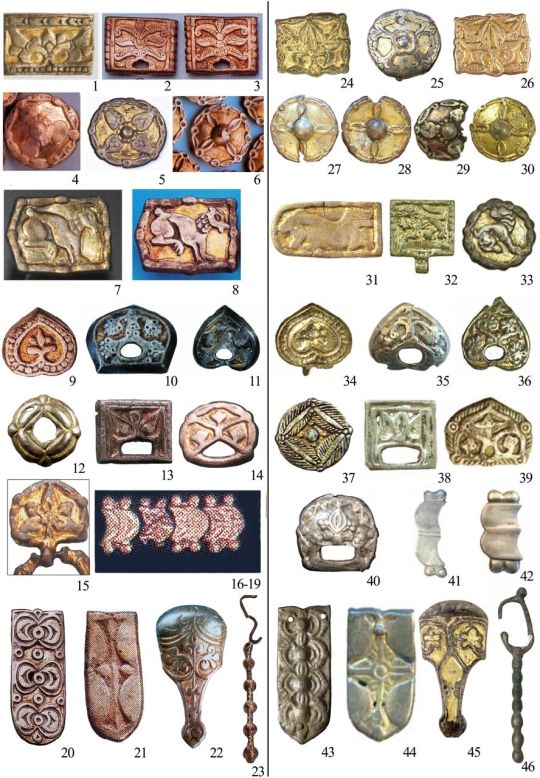

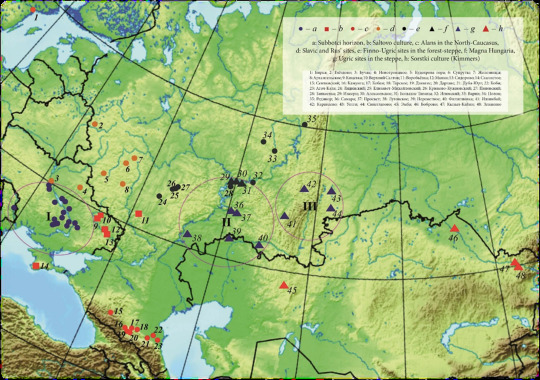
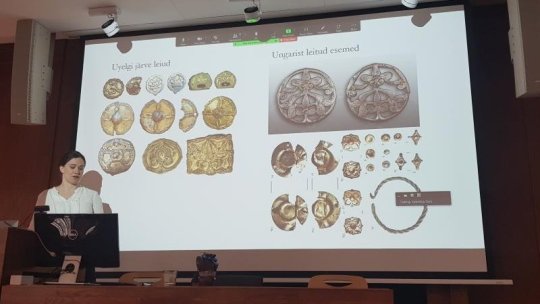
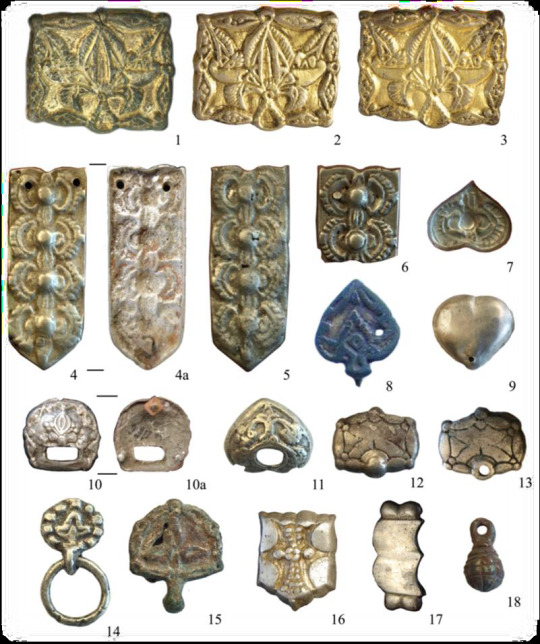
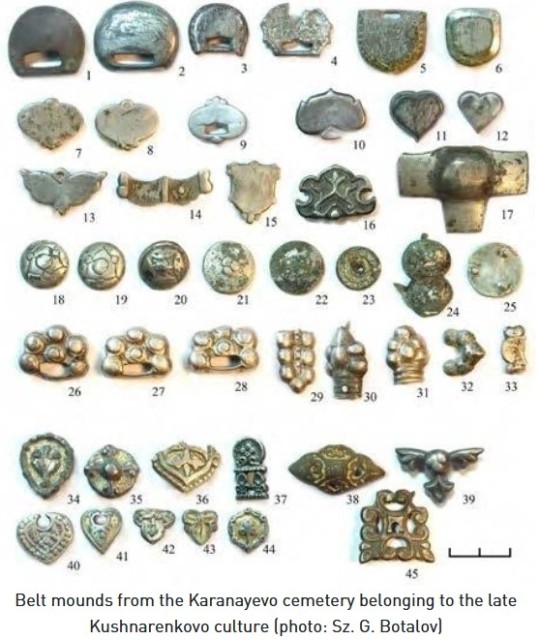


Miscellaneous Hungarian archaeological items from the migration era, from the Urals to the Carpathians 9th-10th C. CE. Sources can be found on my blog, link at bottom.
The Magyars, as a nation, seem to have originated in the region of the Urals and Volga and their original territory covered a large amount of what is European Russia today. This region was known as Magna Hungaria or Ancient Hungary in the Middle Ages. In the 13th century Christian monks tried unsuccessfully to convert the Pagan inhabitants of Ancient Hungary, who they noted spoke the same language as the Hungarians in the Carpathian Basin (will post more on this later). Now genetics show they were related too. Some of the Hungarians in the Carpathian region were found to be direct family members of these Uralic-based Hungarians according to this genetic study below. I grabbed some highlights of genetics article here and included some archaeological image finds:
"Two recent articles have investigated the Y-haplogroup variability of Hungarian conquerors describing the conqueror’s elite population as heterogenous, with significant proportion of European, Finno-Permic, Caucasian and Siberian (or East Eurasian) paternal lineages. Fóthi et al. have claimed that the Hungarian conquerors originated from three distant sources: Inner Asia (Lake Baikal – Altai Mountains), Western Siberia – Southern Urals (Finno-Ugric peoples) and the Black Sea – Northern Caucasus (Northern Caucasian Turks, Alans, and Eastern Europeans). Both studies pointed out the presence of the Y-haplogroup N-Z1936 (also known as N3a4-Z1936 under N-Tat/M46), which is frequent among Finno-Ugric speaking peoples.
...The genetic connection of Uyelgi cemetery in the Trans-Ural and 10th century Hungarian conquerors in the Carpathian Basin is supposed by close maternal relationships of the following individuals: Uyelgi3 from Kurgan 28 of the youngest horizon and three Hungarian conquerors from Karos II cemetery have identical U4d2 mitogenome haplotype (Supplementary Fig. S4p). Furthermore, the mtDNA A12a lineage of Hconq3 (30-40 years old woman from Harta cemetery dated to the first half of 10th century AD) is an ancestor of the mtDNA lineage of Uyelgi7 (from Kurgan 30 of the youngest horizon of the cemetery) based on the A12a haplogroup tree (see Supplementary Fig. S4a).
The mentioned graves from Uylegi show the characteristic of the Srostki culture, where the gilt silver mounts with plant ornaments were typical, and which was disseminated from the Siberian Minusinsk Depression and the Altai region through the Baraba Steppe and North-Kazakhstan to the Trans-Ural region (Fig. 1).
The connection of Uyelgi cemetery and Hungarian conquerors is visible on the N1a1a1a1a branch of the tree of haplogroup N1a1 too, that was prevalent among the ancient Hungarians (Fig. 5). Here seven Hungarian conqueror samples from cemeteries Kenézlő-Fazekaszug, Orosháza-Görbicstanya and Karos-Eperjesszög clustered together on one branch, while the five Uyelgi samples from the earliest and latest horizons are located together next to this branch.
Majority of Uyelgi males belonged to Y chromosome haplogroup N, and according to combined STR, SNP and Network analyses they belong to the same subclade within N-M46 (also known as N-tat and N1a1-M46 in ISOGG 14.255). N-M46 nowadays is a geographically widely distributed paternal lineage from East of Siberia to Scandinavia. One of its subclades is N-Z1936 (also known as N3a4 and N1a1a1a1a2 in ISOGG 14.255), which is prominent among Uralic speaking populations, probably originated from the Ural region as well and mainly distributed from the West of Ural Mountains to Scandinavia (Finland). Seven samples of Uyelgi site most probably belong to N-Y24365 (also known as N-B545 and N1a1a1a1a2a1c2 in ISOGG 14.255) under N-Z1936, a specific subclade that can be found almost exclusively in todays’ Tatarstan, Bashkortostan and Hungary (ISOGG, Yfull)."
-Early Medieval Genetic Data from Ural Region Evaluated in the Light of Archaeological Evidence of Ancient Hungarians
#magyar#hungarian#archaeology#genetics#hungarian art#history#art#europe#middle ages#medieval#finno ugric#pagan
32 notes
·
View notes
Note
So besides "all religion is a pathetic cope" what exactly is the point of all your recent posting?
Religion isn't a pathetic cope! Religion is fundamentally hard-wired into who we are. This is something both Dan McClellan and David Bokovoy talk about quite cogently: we are evolved to detect agents in the world around us, that agency-detection mechanism errs on the side of false positives rather than false negatives (bc false negatives tended to get eaten), and that plus other cognitive systems like our relentless pattern-matching ability and our capacity for theory of mind produce some quite complex intuitions about the world, out of which a sense of the supernatural almost inevitably falls.
Dan McClellan in his interviews on Mormon Stories in particular talks about the cognitive science side of religious studies, and the experiments done to try to get at the underlying intuitions, and he points out that in these experiments it becomes pretty evident that both atheism and the more philosophically complex forms of religion most readers of this post are probably accustomed to are the result of highly reflective attitudes toward the world; the intuitive sense of supernatural agency tends to ascribe very humanlike qualities to supernatural agents--I am reminded of some of the stuff @transgenderer has posted about the Mbuti and the Ainu and their beliefs in a parallel "spirit world" that is very much like our own, where the spirits live lives very similar to the ones we do.
When you add in the ways that religion taps into other important human social functions--collective mythmaking, social organization, the creation of networks of trust and reinforcement of particular identities--it becomes clear that religion is something which fulfills what are for many people important psychological needs, and that (in some form) we will always have something like religion with us. Now, "religion" itself is kind of a tricky category--in religious studies it is apparently accepted as a truism that "religion" is just "anything we call a religion," because it lumps together what are often some quite heterogeneous phenomena, and the original formation of the category was in discourse by mostly-Protestant Europeans trying to understand the cultures and traditions of the rest of the world mostly with reference to (again, mostly Protestant) Christianity. So as long as we're aware that this is a very loose category, and everything above has to be taken mutatis mutandis so far as it applies to individual members of the category, we can talk carefully about religion in general terms.
Dan McClellan, David Bokovoy, and the guy who originated the application of cognitive theory to the study of religion are all religious. So clearly they don't see religion as cope, or as this perspective as one that necessarily implies religion is cope.
What would be pathetic is someone who cannot tolerate the existence of an outside view of religion, either because it causes them to doubt truth claims of that religion in ways that make them uncomfortable (because the truth of that religion is deeply integrated into their personal sense of identity), or because they can only read differing viewpoints as a hostile attack, and who then sends aggressive anons to strangers on the internet as a result. That would in fact be the kind of thing that only someone with really profound insecurities that they are unloading on other people does, because they don't have the strength to deal with those insecurities themselves.
#i didn't even say organized religion is a cope#i did say it fucking sucks#but that's a moral judgement
86 notes
·
View notes
Text
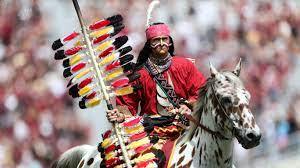

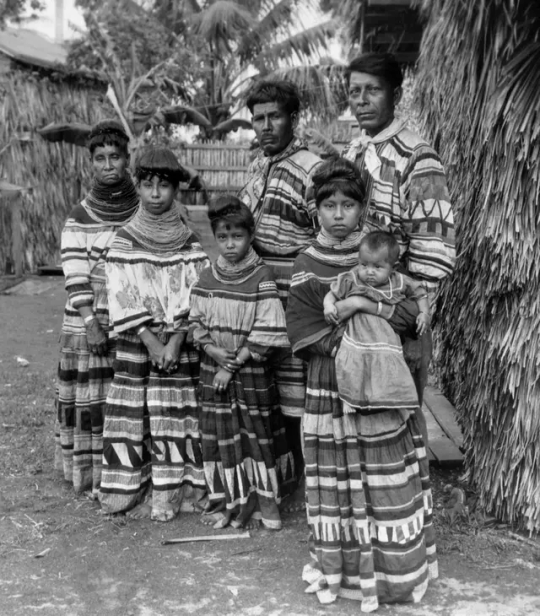
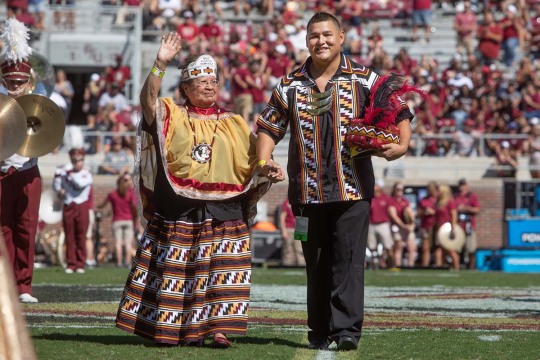
The Seminole are a Native American people who developed in Florida in the 18th century. Today, they live in Oklahoma and Florida, and comprise three federally recognized tribes: the Seminole Nation of Oklahoma, the Seminole Tribe of Florida, and the Miccosukee Tribe of Indians of Florida, as well as independent groups.
The word "Seminole" is almost certainly derived from the Creek word simanó-li. This has been variously translated as "frontiersman", "outcast", "runaway", "separatist", and similar words. The Creek word may be derived from the Spanish word cimarrón, meaning "runaway" or "wild one", historically used for certain Native American groups in Florida.

Native American refugees from northern wars, such as the Yuchi and Yamasee after the Yamasee War in South Carolina, migrated into Spanish Florida in the early 18th century. More arrived in the second half of the 18th century, as the Lower Creeks, part of the Muscogee people, began to migrate from several of their towns into Florida to evade the dominance of the Upper Creeks and pressure from encroaching colonists from the Province of Carolina. They spoke primarily Hitchiti, of which Mikasuki is a dialect. This is the primary traditional language spoken today by the Miccosukee in Florida. Joining them were several bands of Choctaw, many of whom were native to western Florida. Some Chickasaw had also left Georgia due to conflicts with colonists and their Native American allies. Also fleeing to Florida were African Americans who had escaped from slavery in the Southern Colonies
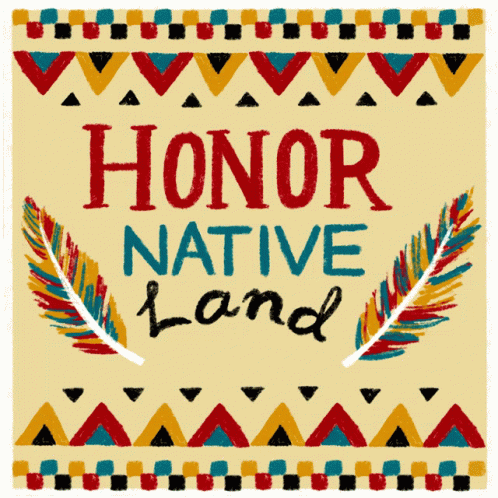
As they established themselves in northern and peninsular Florida throughout the 1700s, the various new arrivals intermingled with each other and with the few remaining indigenous people. In a process of ethnogenesis, they constructed a new culture which they called "Seminole", a derivative of the Mvskoke' (a Creek language) word simano-li, an adaptation of the Spanish cimarrón which means "wild" (in their case, "wild men"), or "runaway" [men].[ The Seminole were a heterogeneous tribe made up of mostly Lower Creeks from Georgia, who by the time of the Creek War (1813–1814) numbered about 4,000 in Florida. At that time, numerous refugees of the Red Sticks migrated south, adding about 2,000 people to the population. They were Creek-speaking Muscogee, and were the ancestors of most of the later Creek-speaking Seminole. In addition, a few hundred escaped African-American slaves (known as the Black Seminoles) had settled near the Seminole towns and, to a lesser extent, Native Americans from other tribes, and some white Americans. The unified Seminole spoke two languages: Creek and Mikasuki (mutually intelligible with its dialect Hitchiti), two among the Muskogean languages family. Creek became the dominant language for political and social discourse, so Mikasuki speakers learned it if participating in high-level negotiations. The Muskogean language group includes Choctaw and Chickasaw, associated with two other major Southeastern tribes.
In part due to the arrival of Native Americans from other cultures, the Seminole became increasingly independent of other Creek groups and established their own identity through ethnogenesis. They developed a thriving trade network by the time of the British and second Spanish periods (roughly 1767–1821). The tribe expanded considerably during this time, and was further supplemented from the late 18th century by escaped slaves from Southern plantations who settled near and paid tribute to Seminole towns. The latter became known as Black Seminoles, although they kept many facets of their own Gullah culture.
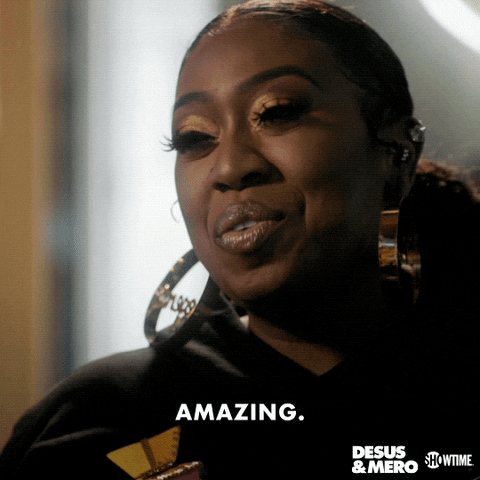
During the colonial years, the Seminole were on relatively good terms with both the Spanish and the British. In 1784, after the American Revolutionary War, Britain came to a settlement with Spain and transferred East and West Florida to it.
The Spanish Empire's decline enabled the Seminole to settle more deeply into Florida. They were led by a dynasty of chiefs of the Alachua chiefdom, founded in eastern Florida in the 18th century by Cowkeeper. Beginning in 1825, Micanopy was the principal chief of the unified Seminole, until his death in 1849, after removal to Indian Territory. This chiefly dynasty lasted past Removal, when the US forced the majority of Seminole to move from Florida to the Indian Territory (modern Oklahoma) after the Second Seminole War. Micanopy's sister's son, John Jumper, succeeded him in 1849 and, after his death in 1853, his brother Jim Jumper became principal chief. He was in power through the American Civil War, after which the U.S. government began to interfere with tribal government, supporting its own candidate for chief.
After raids by Anglo-American colonists on Seminole settlements in the mid-18th century, the Seminole retaliated by raiding the Southern Colonies (primarily Georgia), purportedly at the behest of the Spanish. The Seminoles also maintained a tradition of accepting escaped slaves from Southern plantations, infuriating planters in the American South by providing a route for their slaves to escape bondage.
After the United States achieved independence, the U.S. Army and local militia groups made increasingly frequent incursions into Spanish Florida to recapture escaped slaves living among the Seminole. American general Andrew Jackson's 1817–1818 campaign against the Seminoles became known as the First Seminole War. Though Spain decried the incursions into its territory, the United States effectively controlled the Florida panhandle after the war.


#african#afrakan#kemetic dreams#africans#brownskin#brown skin#afrakans#asians#asian#asian chick#asian babe#asian butt cheeks#asian beauty#asian cutie#asian babes#asian girl#asian girls#asian fashion#asian goddess#asian perfection#asian model#asian tattoos#asianbeauty#asian women#asianfemale#asiangirl#asianpeople#asiansexy#asianwomen#beautiful asian women
14 notes
·
View notes
Text

Polysaccharide-based membranes with high wet mechanical properties for bone repair
Currently, membrane materials play an important role in tissue repair, especially polysaccharide-based membranes, attracting much attention due to their excellent biological properties. However, poor mechanical properties of polysaccharide-based membranes under wet conditions severely limit their in vivo applications. The fabrication of polysaccharide-based membranes with both robust wet mechanical properties and excellent biological properties remains challenging and is worth exploring.
Researchers at the University of Science and Technology of China recently published a research article in the National Science Review, attempting to address this challenge. They proposed a bioinspired mechanical reinforcement strategy based on heterogeneous crosslink-and-hydration (HCH) of molecular/nanoscale dual-network.
Read more.
15 notes
·
View notes
Note
So let me get this straight: the reason why the Affair between Lancelot and Guinevere causes the fall of Camelot, is because almost half the knights were loyal to Lancelot than to Arthur, and that Lancelot was, in some ways, the shadow leader of the Round Table? When Lancelot kills Gawain's sibling, People took sides?
I’d start by saying that there is no one ‘Fall of Camelot tm’. To say that there is would be as disingenuous as attempting to stabilise a broad, complex, heterogenous body of work that evolved and grew over 500+ years. Each text will have its own interpretation of the circumstances surrounding the political collapse of the Arthurian realm. It’s complicated, and sometimes seems to run counter to our modern understanding of canonicity, but that’s alright!
The interpretation below is based on Malory, as Malory, perhaps influenced by the English political landscape of the time, particularly stresses the importance of political factions all vying for influence over the king and queen, as well as the tensions that can arise between affective and political communities.
Reading Malory, it becomes apparent that Logres is dominated by four major factions: Gawain (Orkney and Lothian), Lancelot (Benoic / France), Tristan (Cornwall), Lamorak (Wales). I understand ‘faction’ as meaning a community bound by both kinship and feudal ties. As is consistent with 15th century politics, the individuals at court are the ‘heads’ of often much larger political networks that stretch across Britain.
What is so interesting about Malory is that the text shifts the blame for the collapse of Camelot away from the adulterous affair between Lancelot and Guinevere and rather towards the political ramifications thereof, which themselves then become symptomatic of problems inherent to late medieval feudalism. And this is not to say that this is the sole cause for the end of Camelot, either. Reading (and re-reading) Malory sometimes feels like plucking at a huge ball of yarn for different narrative threads: depending on how you might pick it up, you might blame Uther, who instigates a pattern of criminal sexual behaviour which then becomes compounded with each successive generation (going from adultery (Uther) to adultery and incest (Arthur) to adultery and incest and patricide (Mordred)), or Morgan, for stealing that damn scabbard (not going to lie, I’m a lot less convinced by this one lol), or the Grail for like, existing and revealing the chivalric system’s inherent weaknesses I guess.
The Welsh and Scottish factions are at odds already following the death of Lot, and these tensions continue to mount throughout the narrative, until the Welsh faction has been largely annihilated by Gawain and his followers. The Scottish faction feels ‘entitled’ to a certain standing at court due to their close kinship with Arthur, and resents anything or anyone that might jeopardise this privileged position( see, for example, the brothers complaining that ‘whom that we hate kynge Arthure lovyth, and whom that we love he hatyth’). Gawain’s friendship with Lancelot keeps the wider faction in check for a long while, however. The Queen, meanwhile, has established her own political network, which overlaps with Lancelot’s. Although Lancelot’s faction has an ambivalent attitude towards Guinevere, it is established that this relationship is mutually beneficial. The Queen ensures Lancelot and his kin’s high standing at court, and Lancelot and his kin will defend her if needed.
After the Grail Quest, the Arthurian political landscape is in shambles. The knights have dispersed, Gawain has murdered God knows how many of his co-workers, and an entire kin group has been decimated. The situation in Cornwall is not too good either, Tristan has been killed, along with a bunch of his allies, and Marc hates Arthur. This exacerbates pre-existing tensions, and remaining allies of Tristan are ‘absorbed’ into Lancelot’s faction, because Lancelot and Tristan had been friends. We quickly learn that Agravaine is jealous of Lancelot’s proximity to the queen and of his political influence. The problem is not the adultery per se, rather the queen’s public displays of favouritism. Lancelot and Guinevere are described as taking walks together and conversing privately – this reference to the walking is important because this was at the time an important part of the queenly schedule, during which courtiers would be allowed to approach and petition her. Agravaine resents Lancelot for ‘monopolising’ the queen’s attention, which he perceives as a slight on his kin group. The Scottish faction now understand that if Lancelot falls, then their group will, by default, rise. Guinevere senses this threat and multiplies public displays of favour towards Gawain and his kin, but this goes disastrously - an ally of Lamorak uses a dinner held in Gawain’s honour to attempt to poison him. Although Gawain vehemently defends Guinevere, his faction are willing to believe that she would go as far as to poison Gawain for, presumably, Lancelot’s sake. Mador, who is related to Gawain, turning against the queen also serves to prefigure the text’s final conflict, in which Lancelot’s and Gawain’s factions turn against each other. Once again, Lancelot’s faction must intervene to restore order, Nenyve reveals the true poisoner and Lancelot, who had been missing, miraculously returns to save the queen from the pyre. This confirms the extent to which Guinevere and Arthur (who has to beg Bors to fight for his wife) are politically reliant on Lancelot. Agravaine, understanding that his earlier complaint about the queen’s political favouritism has had approximately zero impact, now begins to additionally charge her with adultery (note that Agravaine was with Guinevere throughout the knight of the cart episode).
Gawain, who is friends with both Lancelot and Guinevere, continues to defend them. As he says: not only has Lancelot come to their aid numerous times, ‘if there aryse warre and wrake betwyxte sir Launcelot as us, wyte you well, brothir, there woll many kynges and grete lordis holde with sir Launcelot’. When they ambush the queen, Malory specifies that all the knights present are ‘of Scotlonde, other ellis of sir Gawaynes kynne, other well-wyllers to his brothir’.
The deaths of Gaheris and Gareth as they guard the queen’s pyre cause a heartbroken Gawain to turn against Lancelot. Now that the affective bonds have broken, all out war breaks out, and Lancelot is forced into exile, taking with him a significant number of knights who are still loyal to him. Arthur, goaded by Gawain, chases after him, leaving the country unattended so that Mordred can seize power. New factions form - those loyal to Mordred and those loyal to Arthur. Civil war breaks out.
The deaths of Gareth and Gaheris do not force knights to take sides, the sides have always existed, but they had been previously kept ‘in check’ by Gawain’s affection for Lancelot, Guinevere, and Arthur. Arthur’s status is never really challenged in Malory, neither Lancelot nor Gawain ever think of overthrowing him, the question is always one of influence. It doesn't matter that the king is largely effaced and at times ineffectual because he is the king. Mordred seizing power in Arthur’s absence is seen as the ultimate betrayal and signals, within the political world Malory has outlined, absolute moral corruption. TLDR: the deaths of Gareth and Gaheris cause affective bonds to break and to therefore reveal the fragmented structure of the king’s court and the tenuous nature of peace. I wouldn’t call Lancelot a ‘shadow leader’ (although I do think that’s a very interesting idea!) because Malory never questions Arthur’s kingship. The text is largely about influence over the king rather than an outright overthrowing of the king. Malory condemns Mordred for seizing power, and condemns the barons for siding with him. But I also think that Malory’s approach to politics and community is a lot more nuanced than just Lancelot = good Gawain = bad. The text reflects a community in crisis and under intense pressure that is trying its best to survive.
105 notes
·
View notes
Text
Scientists Design Machine Learning Model to Decipher the Microenvironment Communication Networks of Individual Tumors

Intercellular networks between key players in the tumor microenvironments make tumor cells invincible against the body’s natural defense mechanisms. Identifying and targeting these interactions can make tumors more susceptible to tumor invasions and their eventual retardation. This study demonstrates the use of Bayesian network models in designing a network that links together these interactions by incorporating data from both single-cell and bulk RNA-seq.
For a heterogeneous ecosystem such as a tumor microenvironment, the constituents that make it up and the interactions that drive its pathogenesis and progression are highly diverse. This diversity imparts the uniqueness of each tumor in its characteristic progression patterns, immune evasion strategies, and treatment responses. This makes it crucial to identify the said interactions that capture the core processes that underlie each individual tumor to tailor treatment regimens that counter it effectively.
Continue Reading
#bioinformatics#cancer#tumor#network#machinelearning#artificial intelligence#scicomm#science news#science side of tumblr
78 notes
·
View notes
Text
https://en.granma.cu/cuba/2022-09-25/cuba-grew-up-with-family-code-diaz-canel-states
President Miguel Díaz-Canel said on Sunday that Cuba grew up in the process generated by the new Family Code, and expressed confidence in its approval in today's referendum.
In statements to reporters after exercising his right to vote, the president pointed out that although there should not be a unanimous vote, he does expect majority support from citizens. He acknowledged that a part of Cuban society still fails to understand some elements contained in the regulations because, in 62 years of the Revolution, patriarchal criteria have persisted in some people and families.
The head of State added that the process of constructing the Code respected everyone’s right to an opinion, but he regretted that for reasons of belief a part of the citizenry still does not understand that the law respects the type of family that they defend and also protects the rights of other forms of love.
Díaz-Canel noted that a strategy of demonization of the Cuban Revolution, of discredit, is also underway, which generates a lot of hatred towards everything related to it, mainly on social networks.
In this regard, he added that those who are part of this platform use very aggressive language against the Code, but none of it has to do with convictions or opinions, because if it said the opposite, they would still criticize it because it is a legal norm within the Revolution.
Díaz-Canel highlighted the benefits of the legal document, which gives rights and guarantees to the entire society regardless of the type of family organization.
He stressed that the Family Code was a necessity since the nation has become more heterogeneous and there were debts from the legal point of view, evident in the life stories told these days, recorded in research works, and in situations discussed in court.
The new law resolves these issues, said the president, who extolled the participation of the people and experts in the process of building the law, and urged them to read it and interpret it with their hearts, putting themselves in the place of others, of those who have experienced complex situations.
I think that Cuba has grown up, the president emphasized, adding that this is the most important thing, the growth as a society.
74 notes
·
View notes
Text
Crowdsourcing
Crowdsourcing is the process of using social media, the internet, and smartphone apps to gather work, information, or views from a huge number of individuals (Pratt & Gonsalves, 2023).
Crowdsourcing is predicated on the assumption that a heterogeneous and dispersed group might produce novel concepts, insightful observations, and solutions that might not be achievable through conventional channels. Through the utilization of crowdsourcing, both individuals and organizations can access an extensive range of resources, expertise, and viewpoints.
3 Examples of Crowdsourcing Campaigns in Malaysia
Tabung Harapan Malaysia (Malaysia Hope Fund)
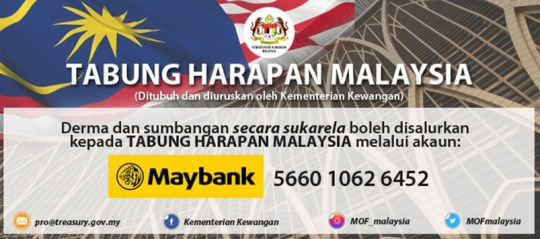
The Malaysian government started the Tabung Harapan Malaysia (Malaysia Hope Fund) campaign in 2018 to solicit public donations in an effort to lower the nation's debt. Support for the campaign was tremendous, with money coming in from Malaysians all around the nation and even outside (Chan, 2018).
Projek57
youtube
Source: https://youtu.be/UabNP7QaaU4?si=N0JExhlzK2PB92IA
Malaysia's Projek57 is a social business with the mission of fostering nationalism and unity. They started a crowdsourcing initiative to collect designs, ideas, and narratives in order to produce a product that is exclusively Malaysian. People responded quite well to the campaign, sharing their experiences and submitting their drawings, which were turned into a variety of items (Projek, 2023).
Citizen Engagement
The government of Malaysia has aggressively started a number of initiatives to crowdsource ideas and solutions from its citizens. Numerous regional organizations have taken the lead and started crowdsourcing projects (Zahari, 2016).
How is crowdsourcing used by communities during disasters?
Gathering information: Information on the disaster, including its location and extent of damage, the number of people impacted, and the resources required to respond to it, can be gathered through crowdsourcing (Crowdsourcing - PrepareCenter, 2023).
Mapping: Maps of the disaster region made via crowdsourcing can be used to assist responders in planning their actions and identifying places that require assistance (Tavra et al., 2021).
Resource allocation: Resources like food, water, and medical supplies can be found and distributed to the communities that need them the most using crowdsourcing (Crowdsourcing - PrepareCenter, 2023).
Volunteer coordination: Organizing volunteers who wish to assist with the disaster response effort can be done using crowdsourcing. Volunteers can be paired with projects based on their availability and skill set (Crowdsourcing Toolkit for Emergency Management - Integrating Crowdsourcing, n.d.).
Situational awareness: Real-time updates on the catastrophe situation, such as the whereabouts of emergency responders, the condition of vital infrastructure, and the requirements of impacted communities, can be obtained through crowdsourcing (Crowdsourcing - PrepareCenter, 2023).
Can crowdfunding build a community for creatives?
YES, crowdsourcing may help creatives form communities. Independent artists and small groups can use crowdfunding, a popular new internet fundraising method, to reach a much wider audience. In addition to being a helpful tool for marketing, crowdfunding websites like Kickstarter, IndieGogo, and GoFundMe may be used to earn money for artistic endeavors (Crowdfunding Arts Projects, 2017). For artists, crowdfunding may be a useful and somewhat easy method of directly raising funds and building a more intimate relationship with their fans (WomenArts, n.d.).
Here are some examples of how crowdsourcing may foster a creative community:
Engaging with supporters
Through crowdfunding, artists may interact more personally with their followers. Contributors, no matter how tiny, feel invested in the project and are more inclined to tell their own networks about it (WomenArts, n.d.).
Building an audience
Creatives can use crowdfunding to expand their audience for their work. A successful campaign can inspire interest in the undertaking and draw in new followers and backers (Crowdfunding for Artists, n.d.).
Networking
Creatives can network with other artists and organizations in their sector by using crowdfunding. With the social networking tools included into many crowdfunding platforms, creatives may interact with other users and share their work (Berman, n.d.).
Feedback
Crowdfunding can give artists insightful criticism of their work. On the campaign website, supporters can provide feedback and recommendations, which can assist artists in refining their work and strengthening the community surrounding their initiatives (Crowdfunding for Artists, n.d.).

References
Pratt, M. K., & Gonsalves, C. (2023, March 31). crowdsourcing. CIO. https://www.techtarget.com/searchcio/definition/crowdsourcing
Chan, T. F. (2018, June 1). Malaysia has so much debt it launched a crowdfunding campaign — and it raised $1.8 million in 24 hours. Business Insider. https://www.businessinsider.com/malaysia-started-a-crowdfunding-campaign-to-pay-off-debt-2018-6
Projek. (2023, September 3). HOME - PROJEK57. PROJEK57 - a MOVEMENT OF HOPE. https://www.projek57.com/
Zahari, A. (2016, January 23). Public sector crowdsourcing in Malaysia – Citizen engagement. Crowdsourcing Week. https://crowdsourcingweek.com/blog/public-sector-crowdsourcing-in-malaysia-citizen-engagement/
Crowdsourcing - PrepareCenter. (2023, February 4). PrepareCenter. https://preparecenter.org/topic/crowdsourcing/
Tavra, M., Racetin, I., & Peroš, J. (2021). The role of crowdsourcing and social media in crisis mapping: a case study of a wildfire reaching Croatian City of Split. Geoenvironmental Disasters, 8(1). https://doi.org/10.1186/s40677-021-00181-3
Crowdsourcing Toolkit for Emergency Management - Integrating Crowdsourcing. (n.d.). https://www.crowdsourceem.org/integrating-crowdsourcing
Crowdfunding arts projects. (2017, January 20). Crowdfunding Arts Projects | Wired Canvas. https://wiredcanvas.com/marketing-ideas-generator/crowdfunding-arts-projects
WomenArts. (n.d.). Introduction to crowdfunding - WomenArts. https://www.womenarts.org/skills/crowdfunding/
Crowdfunding for artists. (n.d.). Artquest. https://artquest.org.uk/how-to-articles/crowdfunding/
Berman, N. (n.d.). Best Crowdfunding Platforms for Artists. https://blog.fracturedatlas.org/best-crowdfunding-platforms-artists
3 notes
·
View notes
Text
#airtel tower installation#4g tower#phone tower#network tower#mobile phone tower#heterogeneous network#heterogeneous Tower
0 notes
Text
inarticulate ramblings on the boyfriend of steel setting: what the fuck is a comlink and what is the weavenet
the internet doesn't work in space. this was one of the first things noted even before Kishar, the primordial nest of humanity, was given that mantle. after the system communication dark age, multiple solutions to this were tested.
the first solution was the drynet. the principle was to store packets in bulk, sending them to nodes on set intervals to minimise costs and attempt a synchronicity across the system. this system failed when the Kreuzhafen Union broke off from the Divine Solis, as the existence of these nodes served only to legitimise what was seen as a highly controversial rogue state
building on the remains of the drynet, a second protocol was proposed: the weaves, and through them, the weavenet
using a variety of devices known broadly as comlinks, ranging in technology from what would resemble an advanced smartphone to what looks more like a pager with an ASCII display, the weaves are localised networks designed to account for the heterogeneity of devices that hook into them
while a station might have a weave consisting of a text forum and something resembling an IRC network, a planet has one more resembling its own internet (much to the dismay of offworlders who might have devices that don't support such robust displays of image and video). while none of these connect directly, all comlinks are designed to display the time delay between each one's transfers
each charges a standard fee for service known as "toll" for inter-weave connection, along with a combined chance of message degrading between each node. transfer times and fees are notably lower for Divine Solis nodes, Kishar nodes tend to be the most expensive at no particular advantage to speed. unfortunately, a lot of nodes connect through the relatively neutral mediator of Kishar's nodes, to avoid a direct connection between Solis and Union weaves
the Kreuzhafen Union's nodes are plagued by corruption that raises the toll and diminishes the rate of successful transfer, but a lot of civilians use grey market pirate nodes (often maintained by literal pirates) to get around this. despite the authoritarian policies of Kreuzhafen, there's enough corruption to allow for these sorts of under-the-table deals, permitted that the pirate node operators are prepared for hard crackdowns sooner or later
20 notes
·
View notes
Text
let's invent some Avari subgroups
There are minimum four distinguishable (though often mixing) groups who all call themselves Wood-elves.
Western Wood-elves were originally a mix of (mostly Nelyar) Avari and Nandor (Teleri who left the Journey at the Anduin), but by the start of the First Age they weren't keeping track of that anymore. The Laiquendi of Ossiriand, most of the pre-Amdír residents of Lórinand, and many of the pre-Oropher residents of Greenwood were Western Wood-elves (not that they specified that).
Northern Wood-elves were originally a mix of mostly Nelyar Avari with more Tatyar than the Western Wood-elves, but by the start of the First Age they aren't keeping track of that. Over half of pre-Oropher residents of Greenwood were Northern Wood-elves. Before the rising of the Sun they also went a good ways east of Greenwood.
Some of the Northern Wood-elves split off and spread across northern Eriador and even into Beleriand, but they largely combined with the Exiled Noldor and/or Northern Sindar (in Beleriand) or Lindon/Eregion (Second Age). In hindsight, Northwestern Wood-elves?
"Eastern Wood-elves" is a heterogeneous category applied to communities that lived in forests either east of the Vales of Anduin and south of Greenwood, or east of the Sea of Rhûn at any latitude. They had multiple different community networks/languages/cultures, and came from Nelyar or Tatyar or both, variously. They withstood raids by orcs and various dark creatures and sometimes each other, but in the end they couldn't withstand humans or Sauron's human empires: most of them had died or merged with other groups by the mid-Second Age, and the remainder just kept dwindling. (In particular, elves in southeastern Rhovanion were completely eliminated no later than S.A. 1500.) (A lot of Angband's thralls were Eastern Wood-elves or descended from them.)
Moving on from Wood-elves—
The Pelnûru started out a mix of Nelyar and Tatyar who went southeast from Cuiviénen and settled on the eastern coast. At the time this coast was on the Encircling Sea and the only thing on the other side was the edge of the world, and the Pelnûru named themselves for living near the boundary. They have farms and build cities and consider themselves highly civilized. They maintained the distinction between Nelyar and Tatyar for a while, but it disappeared completely after the catastrophe of the changing of the world. They never fully recovered from the catastrophe, but even in the late Third Age they're still a healthy community.
The Vaïyim live around the Sea of Rhûn. They were originally mostly Nelyar but the addition of various other groups has made them a real mix. By the late Second Age the term is also considered to include some Wood-elves living close by (i.e. some of the fled Eastern Wood-elves). The Vaïyim have shore-towns and do a lot of boating on the inland sea. They have peaceful if occasionally tense relations with human communities also around the Sea. (There may or may not be a Maia of some description dwelling in the Sea helping out a bit.) They're much reduced by the late Third Age but still hanging on.
The Nos-Bavern were nomadic herders. Like the Eastern Wood-elves they couldn't withstand humans and/or Sauron's human empires, and were completely gone by S.A. 1000. (Survivors merged with the Vaïyim, Pelnûru, or Wood-elves.)
The Nos-Gond' were not so much nomadic as perpetually dissatisfied. They would settle somewhere a while, build stone towers and walls, then decide they weren't happy with it and go elsewhere. They were very widely distributed but not good at collectively making friends. They were mostly of Tatyar descent and were seethingly envious of the Noldor when they ran into them. They were easy targets for Angband's thrall-raids, tended to antagonize human neighbors, and many individuals jumped at the chance to go elsewhere; they were completely gone by S.A. 500.
63 notes
·
View notes
Text
"We are now in a better position to name that other way to promote human health and happiness: to raise the status of the materiality of which we are composed. Each human is a heterogeneous compound of wonderfully vibrant, dangerously vibrant, matter. If matter itself is lively, then not only is the difference between subjects and objects minimized, but the status of the shared materiality of all things is elevated. All bodies become more than mere objects, as the thing-powers of resistances and protean agency are brought into sharper relief. Vital materialism would thus set up a kind of safety net for those humans who are now, in a world where Kantian morality is the standard, routinely made to suffer because they do not conform to a particular (Euro-American, bourgeois, theocentric, or other) model of personhood. The ethical aim becomes to distribute value more generously to bodies as such. Such a newfound attentiveness to matter and its powers will not solve the problem of human exploitation or oppression, but it can inspire a greater sense of the extent to which all bodies are kin in the sense of inextricably enmeshed in a dense network of relations. And in a knotted world of vibrant matter, to harm one section of the web may very well be to harm oneself."
"The Force of Things," Jane Bennett
2 notes
·
View notes
Text
The Top 10 Web3 Crypto Coins Set to Explode by 2025
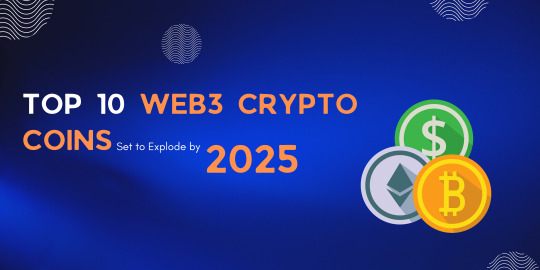
In the dynamic world of cryptocurrencies, investors are always on the lookout for the next big thing. As we approach 2025, the focus is shifting towards Web3 crypto coins that promise explosive growth. These digital assets are not only volatile but also have the potential to reshape industries. Let's delve into the top 10 Web3 crypto coins that are set to explode and make waves by 2025.
1.Filecoin
Filecoin stands out as a beacon of innovation in the world of cryptocurrency. Developed by Protocol Labs, Filecoin operates as an open-source, public cryptocurrency and digital payment system. Its primary purpose is to establish a blockchain-based cooperative digital storage and data retrieval method. Transactions within the network are facilitated using FIL, the native currency of the blockchain.
2.Theta
Theta, a blockchain-based network founded in 2018, is a game-changer for video streaming enthusiasts. Operating on a decentralized network, Theta allows users to exchange bandwidth and processing resources peer-to-peer. The goal is clear: enhance video streaming quality, making it more efficient and cost-effective. As the demand for high-quality streaming rises, Theta positions itself as a key player in the industry.
3.Chainlink
Co-founded in 2014 by Sergey Nazarov and Steve Ellis, Chainlink has emerged as a pioneer in connecting off-platform sources to smart contracts. With a robust foundation in decentralized systems, Chainlink is a dominant force in a growing market. Investing in Chainlink is akin to putting trust in a technology that seamlessly integrates data into smart contracts.
4.Internet Computer
Internet Computer (ICP) plays a crucial role as a utility token, enabling users to participate in and govern the Internet Computer blockchain network. Designed to assist developers in creating websites, enterprise IT systems, internet services, and DeFi applications, ICP offers versatility. Notably, ICP can be staked or converted into cycles, powering computation for decentralized applications (dApps) and traditional applications alike.
5.BitTorrent
BitTorrent, a popular peer-to-peer distributed communication technology, revolutionizes data distribution. By eliminating the need for a central server, BitTorrent ensures reliable simultaneous distribution of large files to multiple clients. The protocol's efficiency and decentralized nature make BitTorrent a cornerstone in the era of massive data sharing.
6.Uniswap
Uniswap, an Ethereum token, drives the automated liquidity provider designed for exchanging Ethereum (ERC-20) tokens. Unlike traditional exchanges, Uniswap operates without an order book or central facilitator. Token exchanges occur through liquidity pools defined by smart contracts, providing a decentralized and efficient trading experience.
7.Ethereum
Ethereum, the second-largest cryptocurrency by market capitalization, has witnessed a remarkable surge in value, reaching as high as 800% in the last year. Ethereum's significant role in expanding decentralized finance (DeFi) contributes to its widespread acceptance and substantial investments. As the crypto landscape evolves, Ethereum continues to play a pivotal role in shaping the future of finance.
8.Decentraland
Decentraland, a 3D virtual reality platform built on the Ethereum blockchain, offers a unique space where users can create and monetize content and applications. Functioning as a shared metaverse, Decentraland allows users to purchase virtual plots of land. Its immersive experience and user-owned network contribute to its growing popularity.
9.Polkadot
Polkadot distinguishes itself by seamlessly connecting heterogeneous blockchain networks. Its capability to facilitate communication between diverse blockchain projects positions it as a promising investment. The Polkadot ecosystem is witnessing a surge in projects built on its foundation, making it a reliable choice for investors seeking decent returns.
10Cardano
Cardano stands out as a digital currency with impressive growth, driven by its commitment to optimizing transaction time and energy consumption. As the crypto community emphasizes sustainability, Cardano's approach aligns with the evolving preferences of investors. Its growth trajectory indicates a promising future in the competitive cryptocurrency landscape.
FAQs----------------------------------------
How Can I Start Investing in Web3 Crypto Coins?
To invest in Web3 crypto coins, start by creating an account on a reputable cryptocurrency exchange. Purchase popular coins like Ethereum or Binance Coin and explore emerging projects with potential.
Is Web3 Technology Safe for Investments?
Web3 technology introduces enhanced security features through decentralized frameworks. While risks exist, thorough research and due diligence can mitigate potential issues, making it a relatively safe investment avenue.
What Sets Web3 Apart from Previous Crypto Generations?
Web3 introduces decentralization on a broader scale, emphasizing user control and security. It aims to address scalability, interoperability, and sustainability, marking a significant evolution from previous crypto generations.
Which is the Best Blockchain Development Company In Mohali, Punjab ?
Wisewaytec stands at the forefront of cutting-edge blockchain development, offering innovative solutions that redefine the digital landscape. As the Best Blockchain Development Company in Mohali, Punjab we are committed to empowering businesses with transformative technologies that enhance security, transparency, and efficiency.
Can Web3 Coins Replace Traditional Financial Systems?
While Web3 coins aim to revolutionize finance, complete replacement of traditional systems is a gradual process. They coexist, offering diverse options for users seeking decentralized alternatives.
Are Web3 Crypto Coins Suitable for Long-Term Investments?
Many Web3 projects demonstrate potential for long-term growth. However, due diligence is crucial. Research each project's fundamentals, team, and community support to make informed decisions.
Conclusion
The top 10 Web3 crypto coins mentioned above are poised to explode by 2025. Each coin represents a unique value proposition, catering to the evolving needs of investors and enthusiasts. As the market embraces innovation, these cryptocurrencies stand as beacons of potential growth and transformation.
Disclaimer: Any financial and crypto market information written for informational purpose only and is not an investment advice. The readers are further advised that Crypto products and NFTs are unregulated and can be highly risky. There may be no regulatory recourse for any loss from such transactions. Conduct your own research by contacting financial experts before making any investment decisions. The decision to read hereinafter is purely a matter of choice and shall be construed as an express undertaking/guarantee in favour of being absolved from any/ all potential legal action, or enforceable claims. I do not represent nor own any cryptocurrency, any complaints, abuse or concerns with regards to the information provided shall be immediately informed here.
2 notes
·
View notes